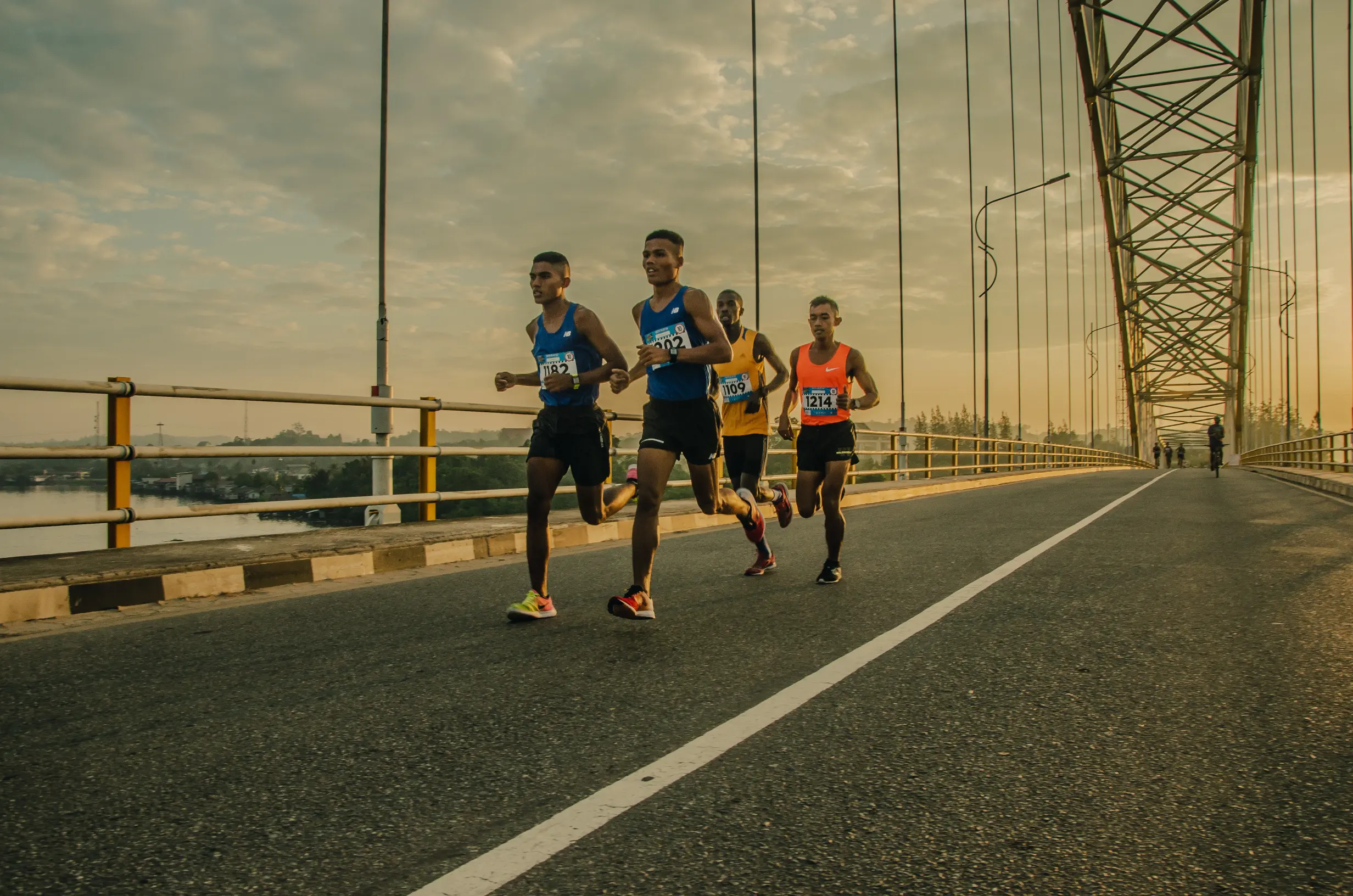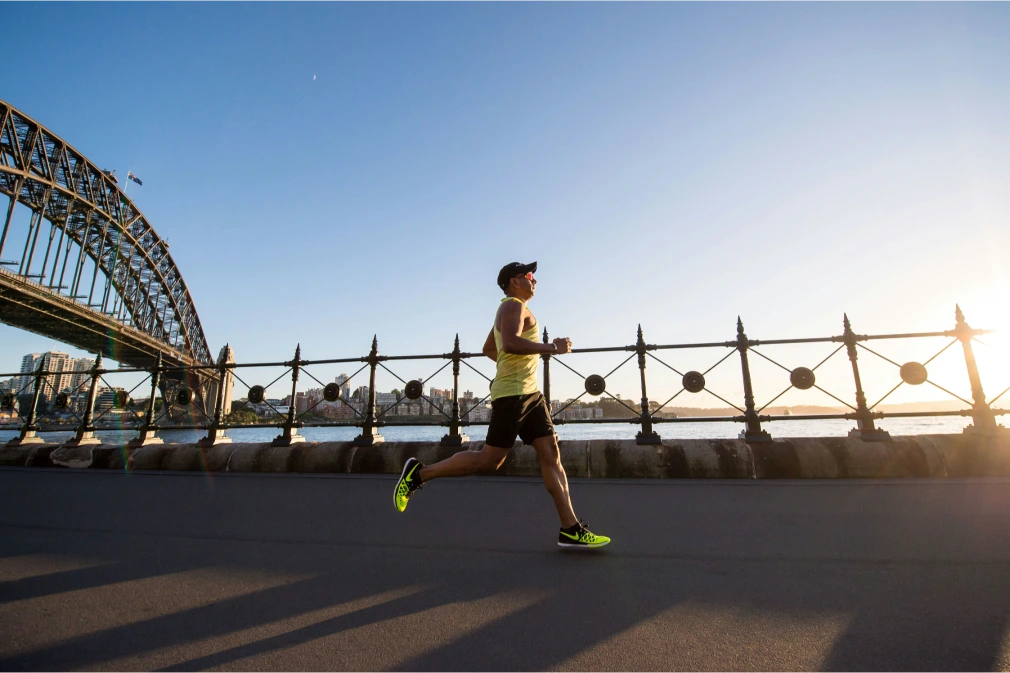Picture this: you receive an email at midday on Saturday. It’s your Parkrun race results. You follow the link and see your name beside a sub-20-minute time. Imagine that feeling for a second.
I will never forget the feeling of when that first happened to me. I carried an enormous sense of pride for weeks after that moment. It finally made me believe I could compete with the proper runners. Those that live and breathe the sport. Sub 18 even seemed possible. Something I would’ve never thought possible before.
You can experience this, too. Here I tell you my race day strategy, which helped knock minutes off my PB, and how you can. But before you read on, if you’re currently running 5ks at over 22 minutes, these strategies won’t be enough to beat the 20-minute mark. They may, however, help you get close. For the rest of you, I’d love to hear from you after putting these tips to good use.
Things you’ll need:
- A GPS tracking device. A watch, smartphone, or both will do. Nothing fancy. Download a free tracking app; something like Strava will do the trick!
- A pair of running shoes. Not much needs to be said here; if your pair works well for you, use those.
- Somewhere to store your keys and phone during the race. A belt, vest or good friend will do.
Morning Preparation
Ideally, you should wake up 2.5 to 3 hours before the 9am start time if you’re serious about your finish time. We must allow enough time to fuel and hydrate adequately, have at least one swift bowel movement, and warm up correctly.
Water – Aim to drink roughly 1 to 1.5 litres before the 9 am start
Coffee – Coffee is a diuretic and can help get your bowels moving. Try a coffee with or just after your breakfast. You want to feel light and fast, not heavy and bloated when you run.
Breakfast: You need a meal with enough fast-releasing carbs to power your race, but only a little so they’re not sitting on your stomach. Anything with wheat or sugar doesn’t work well for me; it makes me sluggish and causes inflammation and a crash, but if this works well for you, go for it.
I go for a tiny bowl of oats (30-40g) made with water, a scoop of pea protein and a banana. Fruit is excellent; something like an apple, banana, or smoothie will work. Go wild, even early morning rice and chicken! Or if you’re like me and try to follow Bryan Johnson’s blueprint, even his super veggie meal will work well. Rice cakes, if they will keep you full, will do too.
Try to avoid anything too high in fat – not that fat’s terrible for you, we’re not in the 90s anymore, just it is a little slower digesting, not quite what we want the morning of a race.
The Warmup
The warmup is where you can shave the most time off your 5k. A proper warmup can take you from an okay finish time to a good one. But what does an appropriate warmup look like?
Let’s start with what a lousy warmup looks like—standing and chatting amongst friends whilst performing static stretches. Doing this is the opposite of what we need to do before a 5k race, yet it’s what 80% of people do before the start. If you look at what those who always finish sub-20 are doing, they’ll be doing several laps of the park in preparation. But isn’t that wasting vital energy, you ask? No. This common misconception is why you see those standing still before starting. Our warmup will not be near the heart rate zones, which deplete the glycogen from your pre-race meal. It will get your body primed and ready to perform at its peak.
Dynamic Stretching
I’d recommend starting with dynamic stretching. Dynamic stretches are moving stretches where you move your limbs through a full range of motion, activating the muscles and warming up the joints; both aid with mobility, as opposed to static stretching, where you’re trying to lengthen a muscle. We’ll save this for after the race, once we’re warm. Static stretching can leave us vulnerable to injury.
Some dynamic stretches I recommend are lunges, hip circles, glute activation with bands, squats, thoracic twists and pogo sticks.

The warmup run
Aim to get out at 8:20-8:25 for the start of a slow 15-20 minute run covering anywhere from 2-3km. Ever felt like the first km in a parkrun is quite tricky, and you’re not up for it, then you start to feel up for it and ready after that? That’s because you didn’t warm up properly. We want to start the race prepared.
When we start the run, we want to be plodding very slowly to warm up the feet, the calves, the glutes and the quads. Throw in some side steps here too. I even like running backwards for a short while to activate the posterior chain. Then, from here, complete 2km at a comfortable pace of 5:30-6 minutes per km.
After the 2km, rest for a few minutes, relax your breathing and pay attention to how your body feels as you breathe in and out of your nose. Add in some gentle arm swings here, too.
Strides
Strides are an over-exaggeration of your form. They will be performed for about 10-20 seconds, which equals about 50-100m in distance. These should start slow and build gradually to your top-end speed for about 5 seconds at the end. When doing strides, you should aim to do 5-10 rounds, and the recovery can be either a walk or a slow jog back to the start. We’ll be using our fast-twitch/type 2 muscles towards the end of the race, so we must get these warmed up, too. Strides also give the heart, the most important muscle, a chance to wake up and experience intensity. You don’t want to feel this for the first time of the day during the race; you want to feel comfortable and safe.
When performing strides, focus on your form. Run with powerful, high knees and fast, powerful arm swings.
Now you’re ready to go 10-15 minutes before the start. It is time to do what you need to get more water, a coffee or another trip to the loo.
The Race
The Start
Being on the start line, right at the front, is crucial here. So, have your phone or watch ready on your GPS tracker. It helps to have a clear path for the first 200m without obstructions to find your pace.
Don’t worry if your first 50m-100m is faster than your target pace; getting a clear path is critical here. This short sprint won’t have any negative consequences from a high heart rate. Go for it!
When you’re 200-300m into the race, you should have some space, so now check your pace on your GPS Tracker. Remember, to finish in 20 minutes or less, we need to run at a pace of 4 minutes per km (6:26 Per mile) or quicker. So, if need be, adjust your pace and hold it. Now, relax your shoulders and focus on controlled breathing in and out of your nose. If this doesn’t feel right, try just inwards through your nose and out through your mouth as far as you can through the race.
In the first kilometre, adrenaline, nerves and excitement get the better of most. They burn out too soon. Focus on your race here; you’ll see people pass you enthusiastically. Just let them go; we’ll pass them further into the race. If you feel too slow at 4 min per km, don’t get excited and try to push past it; stay consistent; you want your heart rate to remain low. If it goes high in the first 25% of the race, there is no way it’s going to be able to come down; we’re better off slowly raising the intensity as we proceed.
The second and third km
Here, we will start to glide past those who went past us in the first km. Those runners will likely be panting; we need to stay relaxed, holding a consistent pace of 4 minutes per km. We go past the halfway point in this section, a joyous part of the race. Remember that every step from this point takes you closer to the finish line.
You will feel your body working, check in with yourself, and think about your form. Run tall, land lightly with your feet under your hips, and relax your shoulders, arms and hands.
The fourth km
This kilometre is make or break. You start to feel pain and start to wonder if this is even worth it. “I could jog the rest; it’s only parkrun,” you tell yourself. All these negative thoughts creep in. It’s natural for anyone. The winners quieten this in their minds and push through it to greatness. You are capable of that, too.
A couple of things to remember are:
1) You’ve warmed up properly for injury prevention. Your body is ready for a test.
2) You’ll be across the line in 5 or 6 minutes. Think of the pain you’ve battled through or are up against every day. 5 or 6 minutes won’t beat you.
The final push
This final kilometre is your opportunity to bring it home. You have put in all that hard work. You’ve made it this far at the target pace; let’s get the job done right.
800m to go, swing those arms and slowly pull the trigger for a few hundred metres, gradually increasing the pace. Smile!
It will feel more challenging to maintain a pace. Push!
With 500m to go, take it up a notch, thank the marshals and crowd for their support and let your legs fly.
250m to go, that’s 30-40 seconds to hit your best time ever. It’s going to feel awful. Fight it with everything you’ve got and get to that line as quickly as possible!
I promise you, the feeling is euphoric.
Final note
Final note
I want to wish you the best of luck. I’m very interested to hear how you got on using these techniques. Please let me know in the comments below or email me if you did it and crushed your PB.
Thanks for reading,
Mike McDonnell



